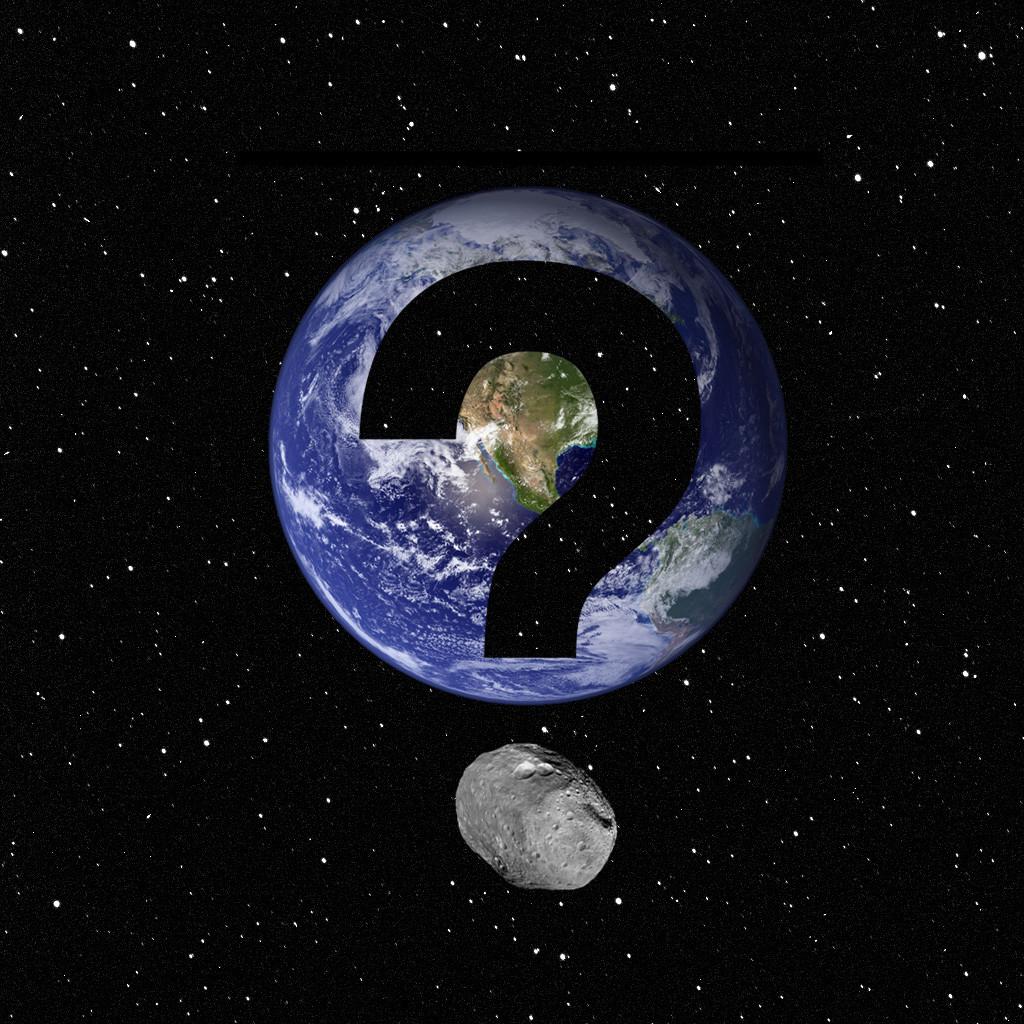Space rocks on
The asteroids don’t even know where they’re going, how should we?
On Earth we sit around and worry about deadlines for papers that will be read and passed and trashed, and lost and forgotten in time. All the superficial, minuscule stuff that fills our world and minds is all so incredibly small, useless, and irrelevant. Once you consider the fact that a rock, as long as 10 football fields, could slam into our home planet at any time – hopefully paperwork, grades, old grudges; all fade and our daily “problems” no longer exist.
Just a week ago, on October 29th, one of the infinite possible threats passed between Earth and the Moon. An asteroid the size of an 18-wheeler truck flew by, passing between our planet and the Moon – closer than some weather satellites. This rock is small enough to not see it coming – but big enough to drop in like 20 atomic bombs. The shockwave caused by the explosive impact wouldn’t cause a global effect, but would definitely wipe out a small town, or township – one just like Delhi. Being 10 square miles in total, and being home to over 30,000 people, the violent forces that a rock like that could bring would almost certainly take a lot of life.
Delhi native Brett Gerdes, 18, told me what he thought about the possibility of a half-mile wide crater on Delhi Pike.
“It would be a lose/lose situation. If the asteroid was big enough to see coming it would annihilate Earth. Even if it was small it would still be crazy – and even crazier yet is if the asteroid had aliens on it,” he said.
Scientists say that these asteroids would break up into smaller pieces upon entering Earth’s atmosphere; but either way, the chunks that will still end up hitting somewhere on our planet, will do damage. It’s a game of cosmic cat and mouse – but we can’t run.
Last February, a meteor about 17 meters in diameter surprised our planet, flying into a lake in Russia, creating an explosion that injured over 1,600 people. The energy released at the point of impact is comparable to 30-40 times the energy in the Hiroshima atomic bomb. Written in the history books as the Chelyabinsk meteor, the far travelling projectile became a catalyst for our modern NASA scientists to make un-foreseen threats like the one that just hit – less of a threat.
The result is a compilation of over 1,400 orbits. A mapping of the flight paths of all these “potentially threatening” meteors, are all known, and the likelihood of any impact in the next 100 years is known – for now. They are not easy to find, however, we have hobbyists to thank for much of the warning. Out of the “near-Earth objects”, or the ones that pose danger to earth, many of these newly recorded and mapped objects have been discovered by amateur astronomers.
The catch is that these 1,400 that are mapped, are ones characterized each as possible enders of our existence. Over 8,000 near-Earth objects are out there.
The Chelyabinsk meteor was one of those smaller, harder to detect rocks – that we didn’t see coming. So, what this means for astronomers is that the hunt is on.
Ranging in size from minivan to city bus to an Olympic swimming pool – these incredibly dense chunks of stone and iron are flying at 100,000 miles per hour. The craters they leave are somewhere around 20 times the size of the rock itself.
It seems a new bounty has been set on the distant space where possible Earth-crushers could be lurking. They aren’t easy to spot, and that is why there are still so many unknowns. Bus-sized rocks are well too small to see with the almost black-against-black color comparison.
The larger ones, like the one that passed on September 16, is one of the biggest ever recorded to fly by as close as it did. Four million miles doesn’t sound close, but over the course of orbiting, an asteroids orbital path may shift, getting closer and closer every time it passes.
The threat is that this 1,300 foot (four football fields in diameter) rock could come back around and hit. It’s due back around in 2032 – so in 2024, 10 years before it poses its threat, scientists say at that point it will be examined, and they will then be able to determine whether or not it will hit – and if so, where it will hit, and what we can do.
But don’t worry – there is a 99.998% chance that the orbit asteroid 2013 TV135 will send it here. Looking at the amount of space that the orbit could shift, given gravity; and looking at the tiny amount of that space that Earth occupies, this percentage is generated.
The best we can do; as ants under a magnifying glass – is hope and pray that we dodge the possible, yet very unlikely impacts that could eventually bring our fate.
Our fate: unknown. People say not to worry about things you cannot control, so unless you think you can find a way to deter a giant space rock, I’d say don’t let it ruin your day.
Space rocks are a part of nature, and they will take their course. Mother Nature extends far beyond our purest forests and waters; the Earth being merely a cell in the body of an infinite universal being.

I'm Chris Henkel, I'm a writer, and co-editor for Elder High School's school paper - both print and online. In general, I'm a guy that likes to be outside....









